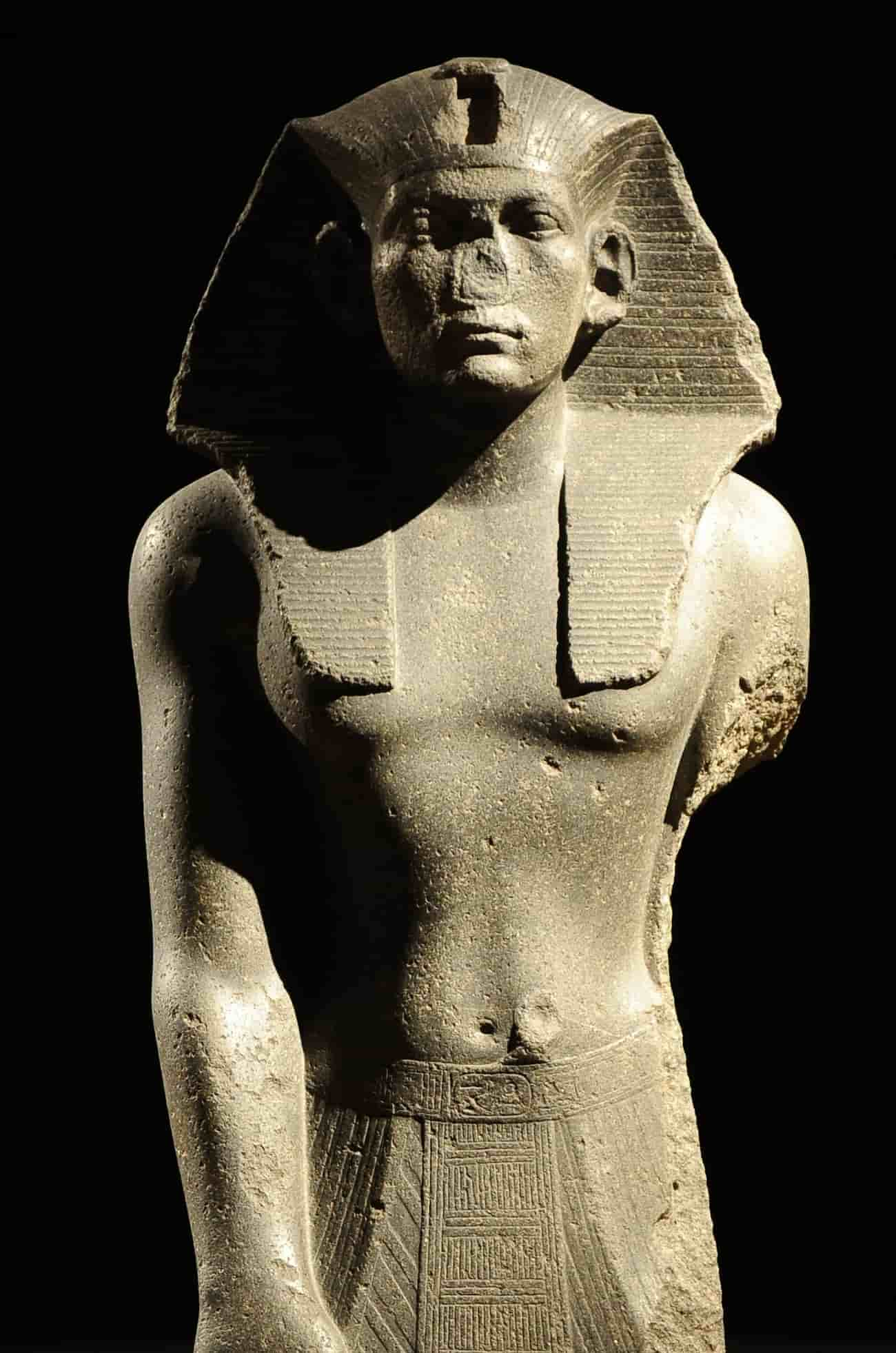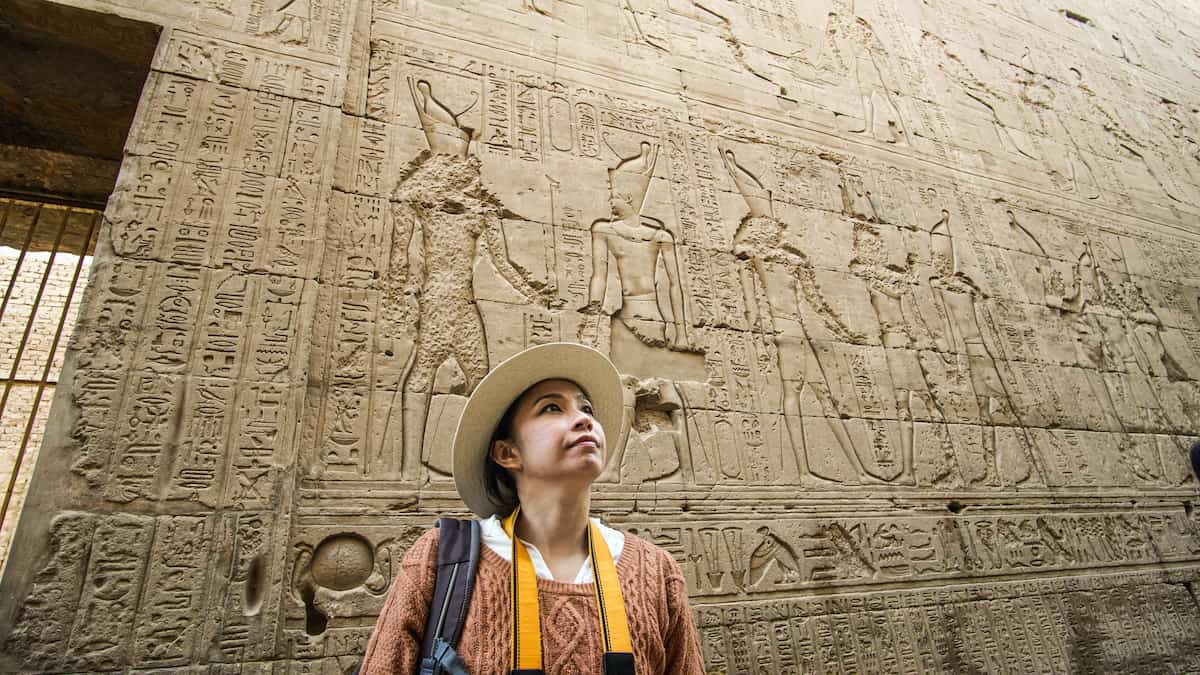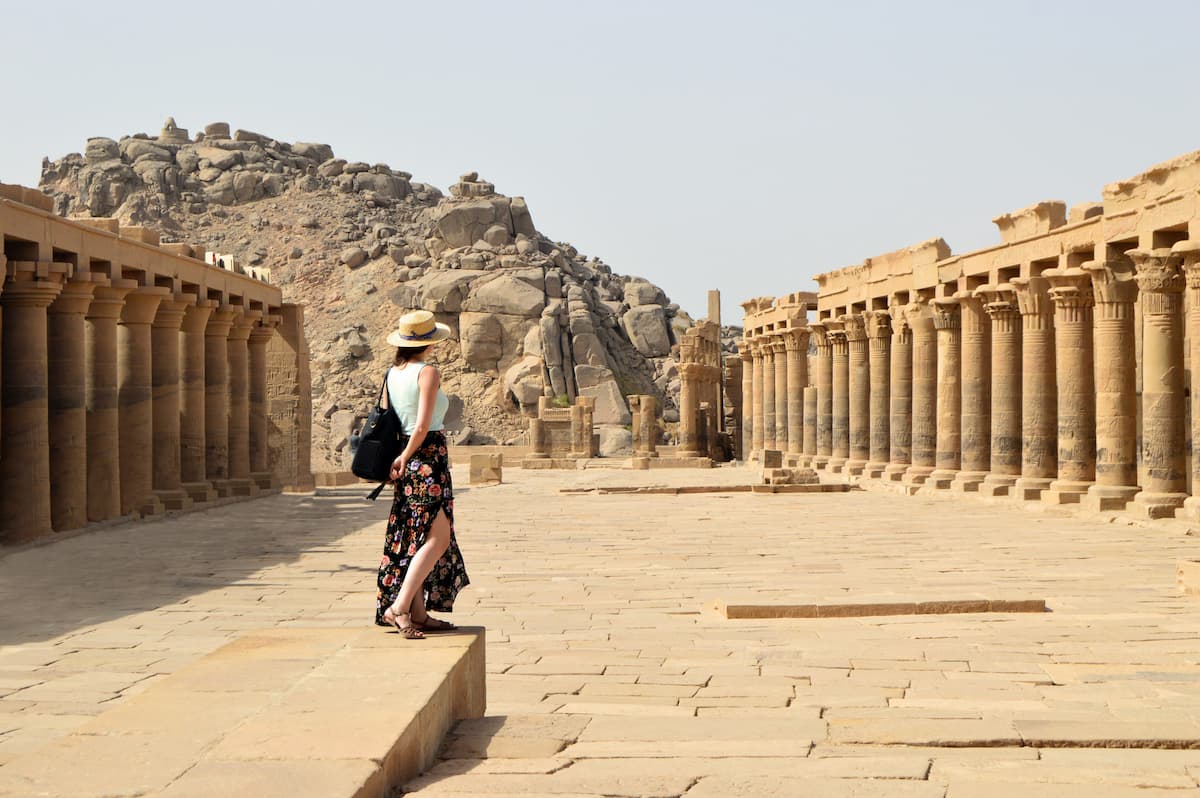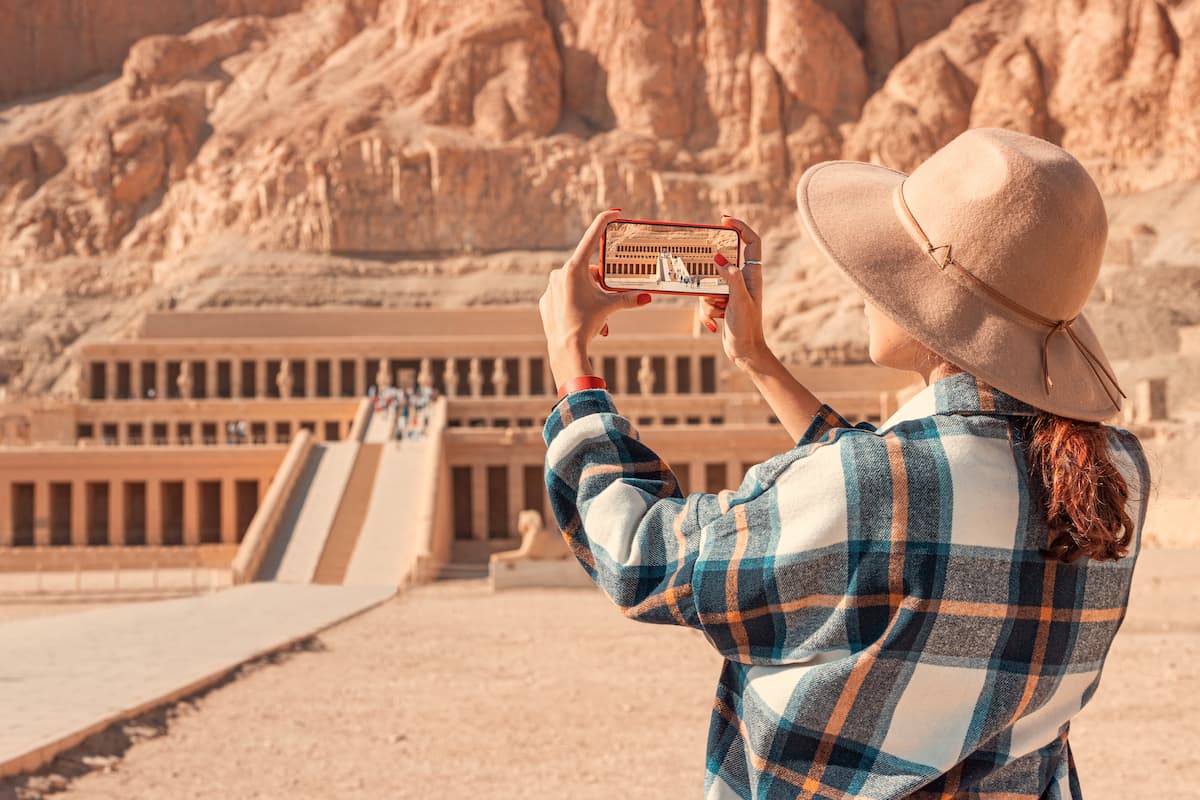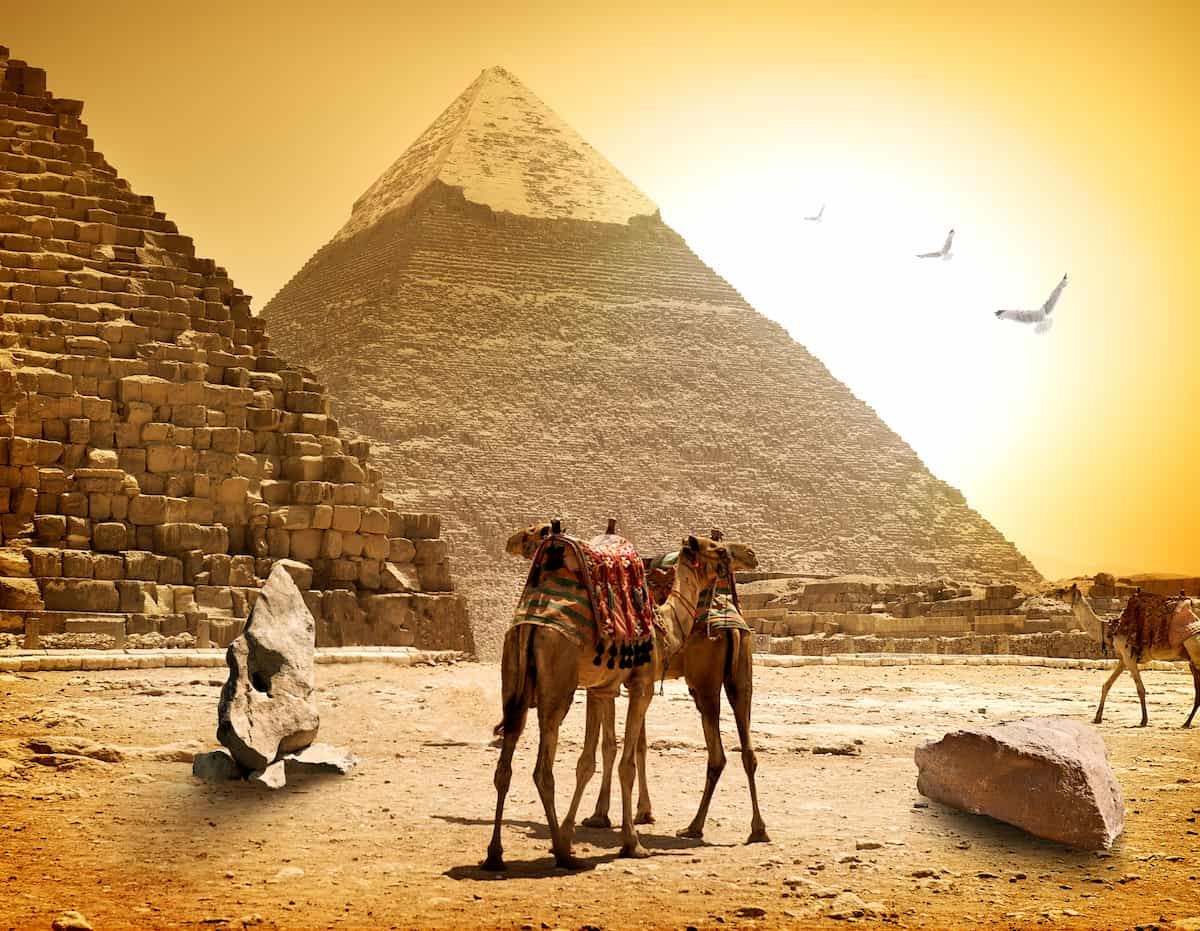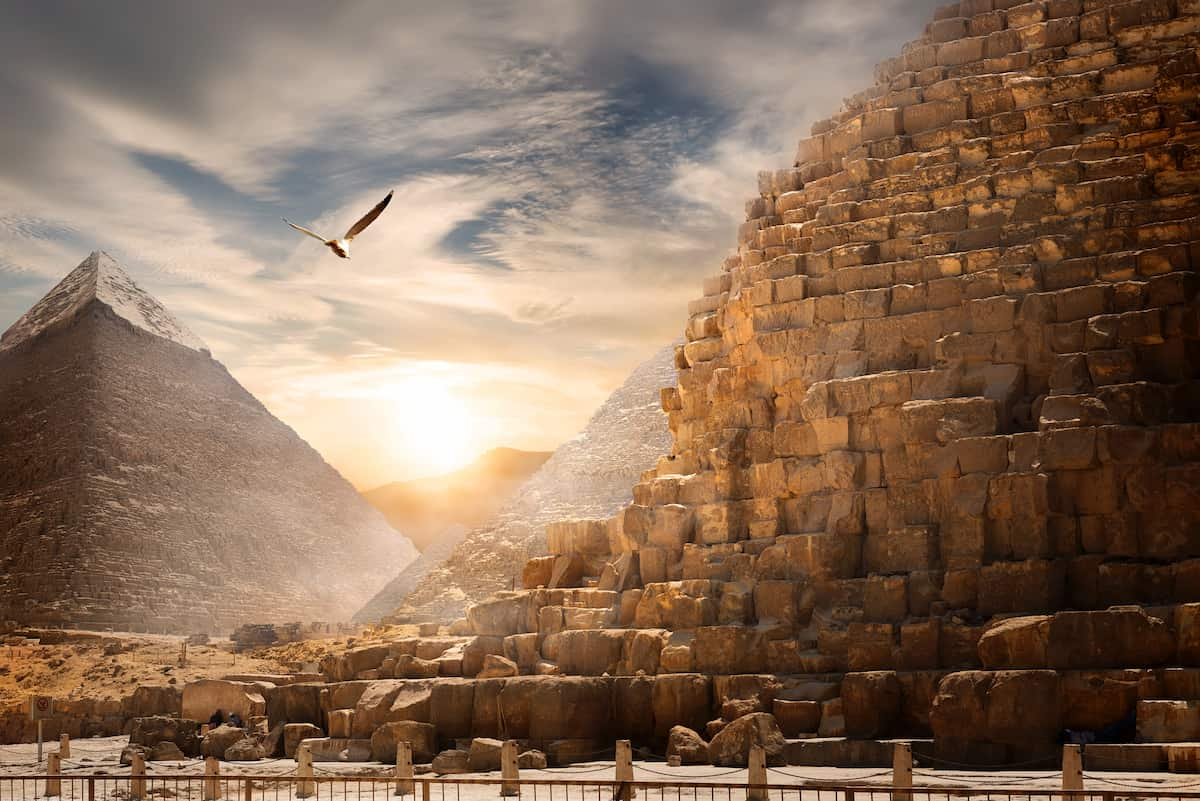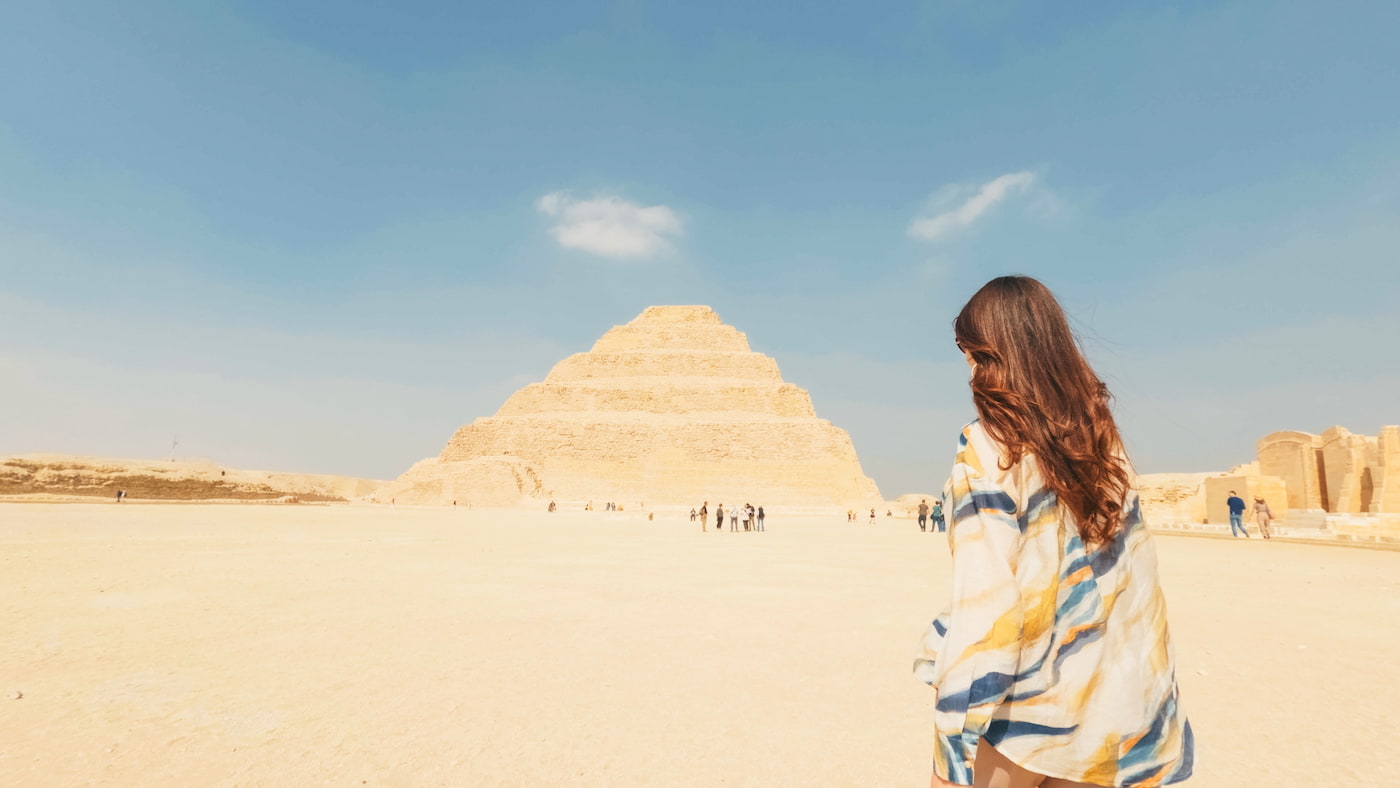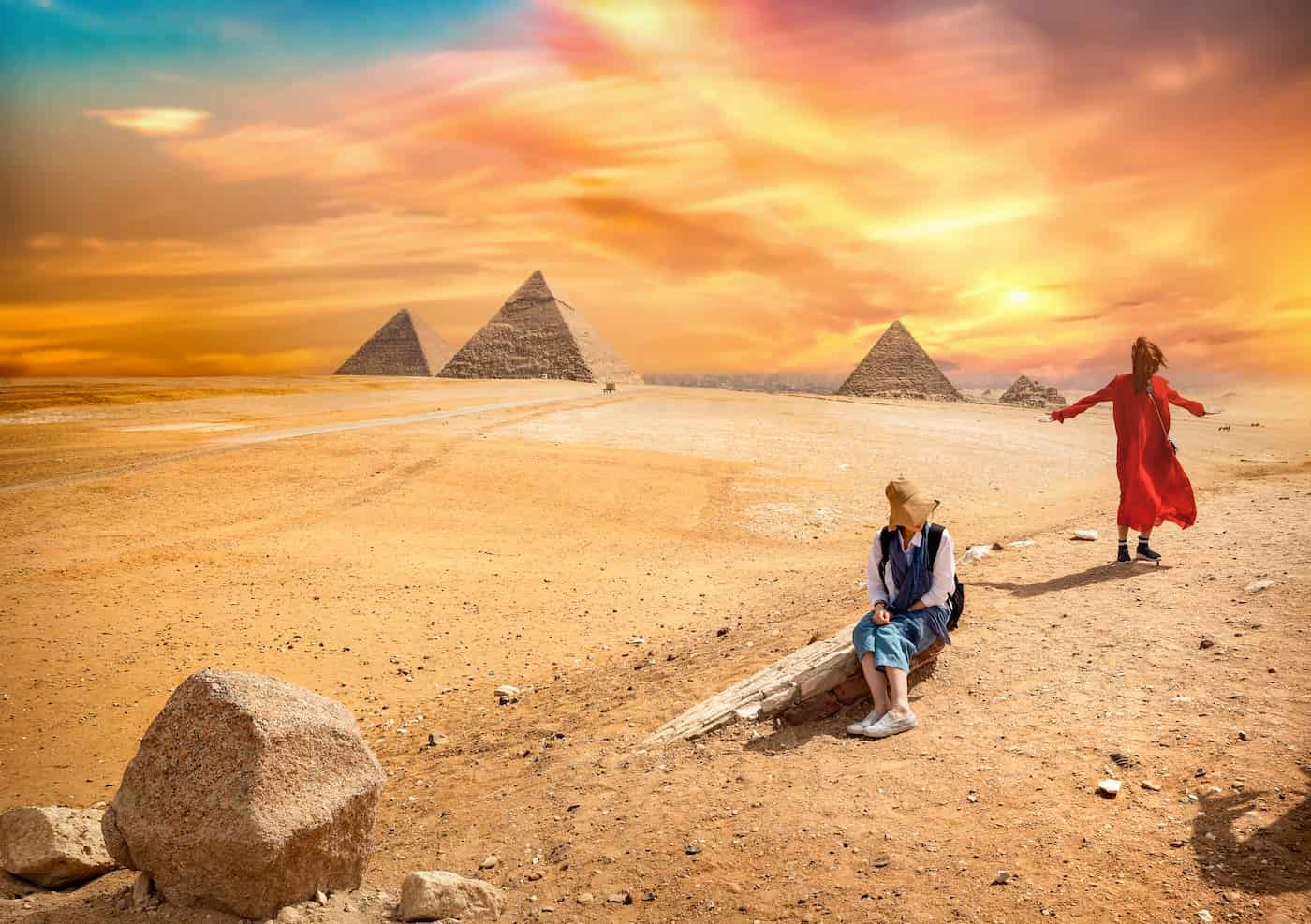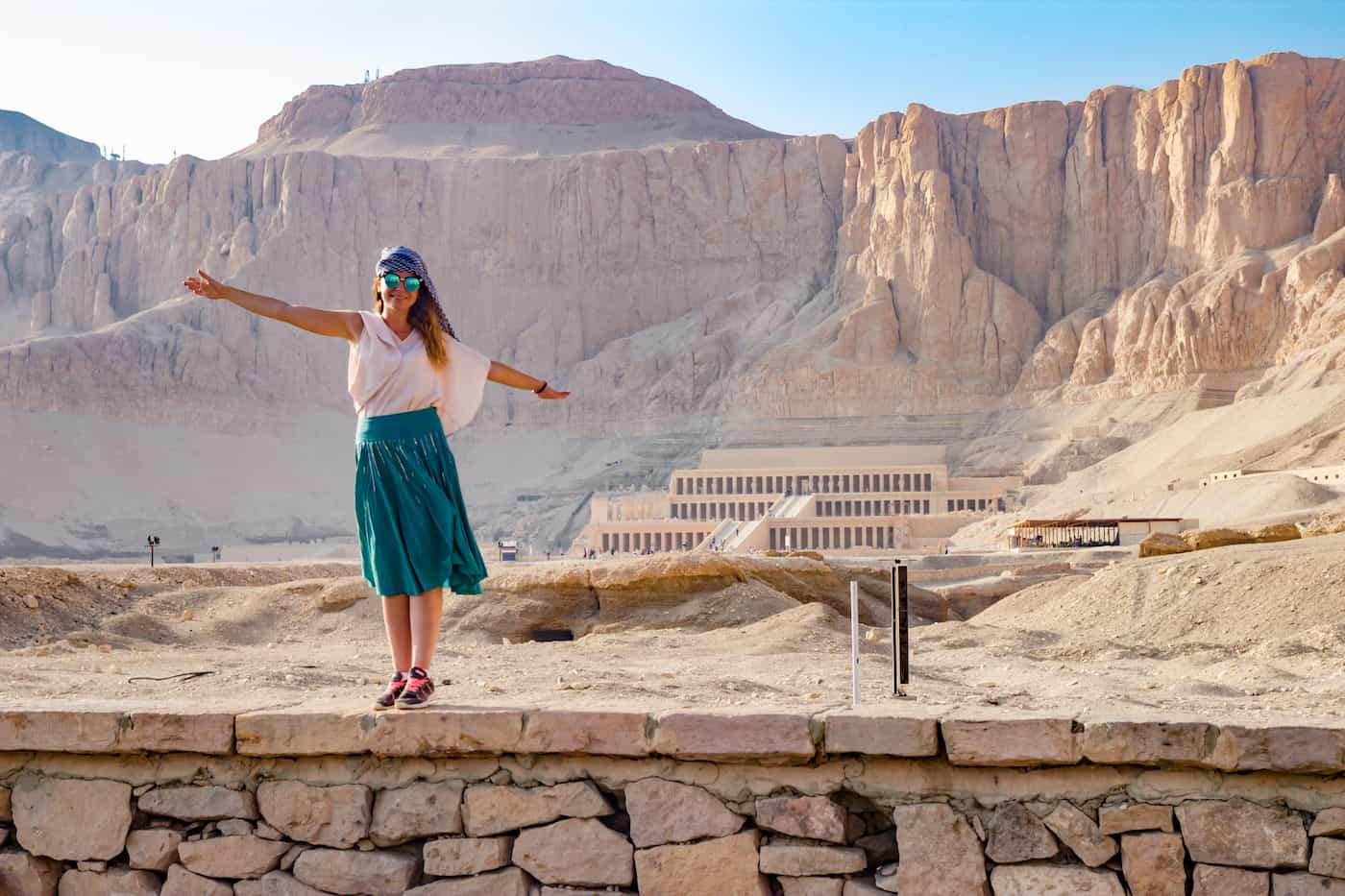King Amenemhat III Life, Reign, Legacy, and Mysteries
Amenemhat III was a pharaoh of ancient Egypt and the sixth king of the Twelfth Dynasty of the Middle Kingdom. He took the throne as co-regent with his father, Senusret III. He shared the throne with his father as the active king for twenty years. During his reign, Egypt had its cultural and economic zenith of the Middle Kingdom.

King Amenemhet III
Amenemhat III inherited a stable and peaceful Egypt because of the aggressive military and domestic policies of Senusret III. He directed his efforts towards an extensive building program with particular focus on Faiyum. Here, he dedicated a temple to Sobek, a chapel to Renenutet, erected two colossal statues of himself in Biahmu, and contributed to the excavation of Lake Moeris.
What does the name Amenemhat mean?
Amenemhat III was for ancient Egyptian: Ỉmn-m-ht meaning ‘Amun is at the forefront’.
The first pharaoh since Sneferu to build more than one pyramid.
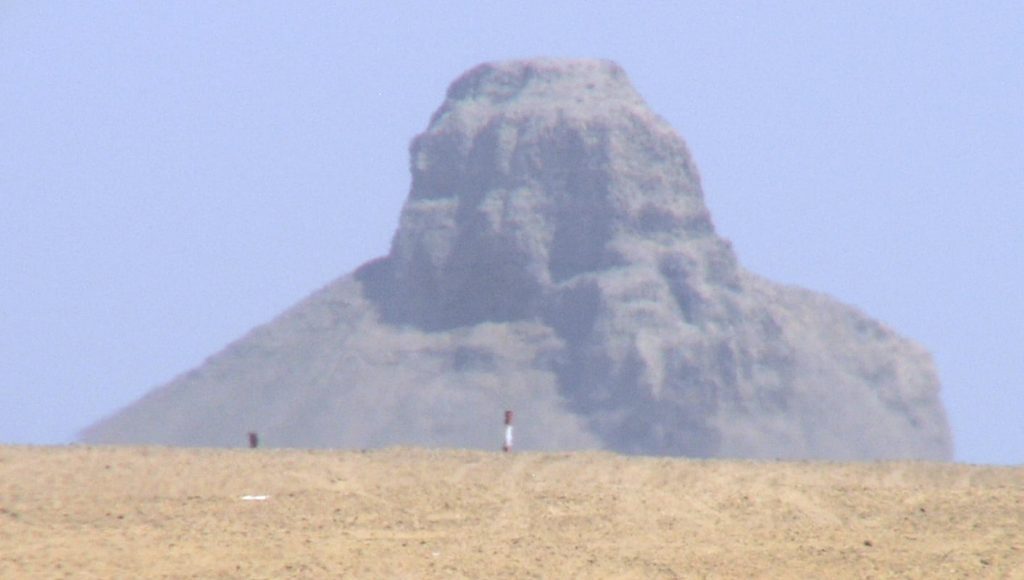
Dahshur Pyramid
He built for himself two pyramids at Dahshur and Hawara, becoming the first pharaoh since Sneferu in the Fourth Dynasty to build more than one. There is a pyramid for his daughter Neferuptah near his Hawara pyramid. Amenemhat III exploited the quarries of Egypt and the Sinai for turquoise and copper to acquire resources for the building. Other exploited sites include the schist quarries at Wadi Hammamat, amethyst from Wadi el-Hudi, fine limestone from Tura, alabaster from Hatnub, red granite from Aswan, and diorite from Nubia.
There is scant evidence of military expeditions during his reign, though a small one is attested at Kumma in his ninth regnal year. He also sent a handful of expeditions to Punt.
Amenemhat III Family
Amenemhat III was the son of Senusret III, his predecessor on the throne. The identity of his mother is unknown. He had several sisters – Menet, Mereret, Senetsenbetes, Sithathor, and a partially known Khnemet.
Who was Amenemhat III’s wife?
Two of Amenemhat III’s wives are: Aat and Khenemetneferhedjet III. People also buried them in the Pyramid of Amenemhat III at Dahshur.
How Many Children does Amenemhat III have?
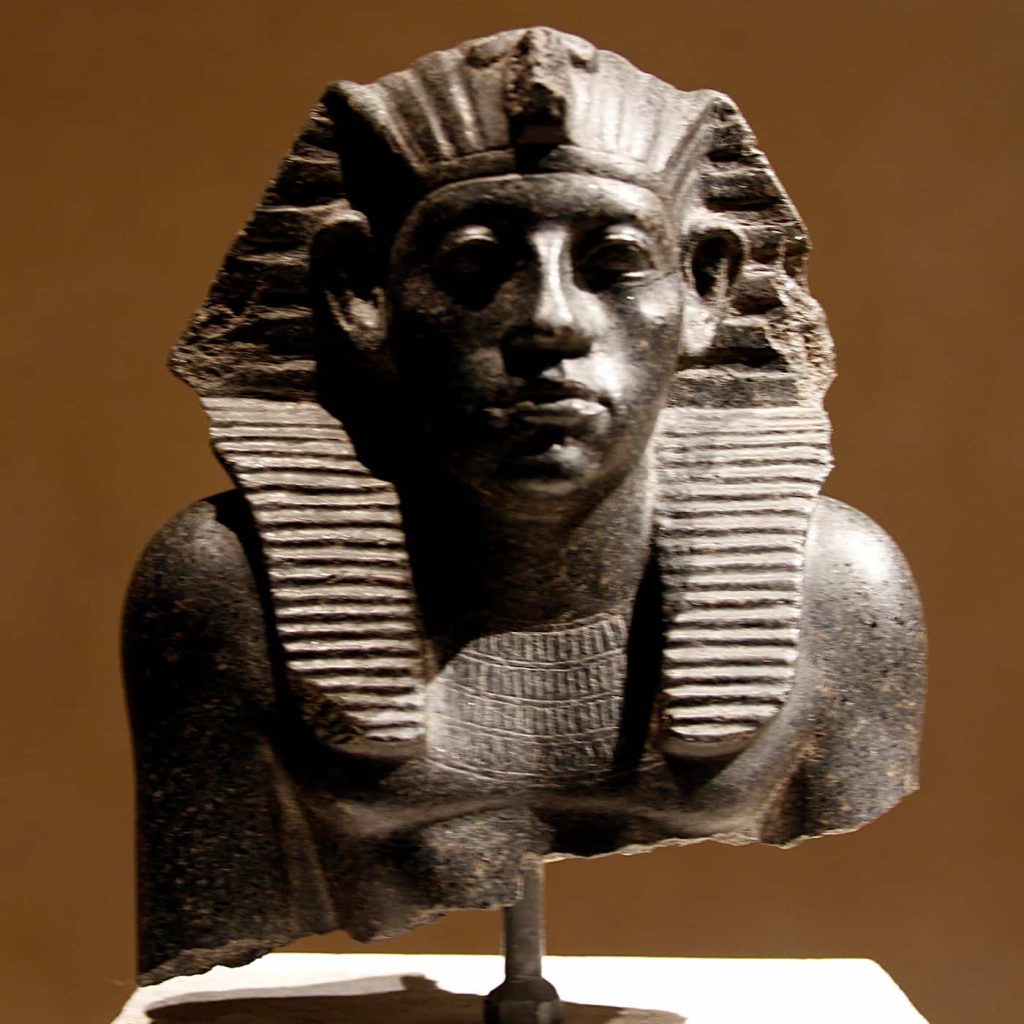
King Amenemhat III – Neues Museum – Berlin
He had one daughter, Neferuptah, who was his successor, owing to her name being enclosed in a cartouche. Two other children, both of whom reigned as king, are also attributed to Amenemhat III: a son, Amenemhat IV, and a daughter, Sobekneferu.
Researchers suggested that Amenemhat IV may instead have been a grandson. There were also burials of three other princesses: Hathorhotep, Nubhotep, and Sithathor at the Dahshur complex, but it is not clear whether these princesses were Amenemhat III’s daughters, as the complex was a royal burial throughout the Thirteenth Dynasty.
Amenemhat III Reign
Amenemhat III reigned for at least 45 years, though a papyrus fragment from El-Lahun mentioning a 46th year probably dates to his reign as well. Toward the end of his reign, he instituted a co-regency with Amenemhat IV, as recorded in a rock inscription from Semna in Nubia, which equates regnal year 1 of Amenemhat IV to regnal year 44 or 46–48 of Amenemhat III. Sobekneferu later succeeded Amenemhat IV as the last ruler of the Twelfth Dynasty.
Co-regency System
In his twentieth regnal year, Senusret III elevated his son Amenemhat III to the status of co-regent. For the following twenty years, Senusret III and Amenemhat III shared the throne, with Amenemhat III playing the active role as king.
Amenemhat III took the primary role as the regnal dates rolled over from year 19 of Senusret III to year 1 of Amenemhat III. His reign is for at least 45 years, though a papyrus fragment from El-Lahun mentions ‘regnal year 46. So, the highest date might be on a bowl from Elephantine bearing regnal year 46.
In his 30th regnal year, Amenemhat III celebrated his Sed festival, which exists in several inscriptions. His reign ends with a brief co-regency with his successor, Amenemhat IV.
These two kings, Senusret III and Amenemhat III, presided over the golden age of the Middle Kingdom. Senusret III had taken aggressive military action to curb incursions from tribes people from Nubia. These campaigns were across several years and were brutal against the native populations, including the slaughter of men, enslavement of women and children, and the burning of fields. He also sent a military expedition into Syria and Palestine, which were enemies of Egypt since the reign of Senusret I.
His internal policies targeted the increasing power of provincial governors and transferred power back to the reigning monarch. Senusret III formed the basis for the legendary character Sesostris described by Manetho and Herodotus. As a consequence of Senusret III’s administrative and military policies, Amenemhat III inherited a peaceful and stable Egypt, which reached its cultural and economic zenith under his direction.
Amenemhat III Activities
There were many expeditions and activities in many countries :
In the Sinai Peninsula
Amenemhat III’s activities in the Sinai Peninsula are well-attested. There were expeditions to Wadi Maghara. Workers decorated the temple of Hathor during the expedition in year 2, which is also the only expedition for which the mining of copper is attested.
There was a related inscription in Ayn Soukhna that suggests the mission originated from Memphis and perhaps crossed the Red Sea to the peninsula by boat. A single expedition existed in Wadi Nasb in his 20th regnal year. There were almost 18 or 20 expeditions to Serabit el-Khadim during Amenemhat III’s reign. Also, there are many inscriptions whose date is indeterminable.
In Egypt

Dahshur Pyramid
One of the naos from the funerary temple of Amenemhat III at Hawara, now in the Egyptian Museum at Cairo. The left figure, who flexed his arm across his chest to bring a sign “ankh” (life) to the face of his partner, is Amenemhat III. The king on the right is his son and successor, Amenemhat IV.
One inscription dating to year 43 of Amenemhat III’s reign comes from Tura and refers to the quarrying of limestone there for a mortuary temple, either that at Dahshur or Hawara.
A stela retrieved from the massif of Gebel Zeit, 50 km (31 mi) south of Ras Ghareb, on the Red Sea coast, shows activity at the Galena mines there. The stela bears a partial date suggesting that it was inscribed after regnal year 10.
There were several expeditions to Wadi Hammamat, where there was schist. A few expeditions were sent to Wadi el-Hudi, south-east of Aswan, where amethyst was collected. An expedition was also sent to Wadi Abu Agag, near Aswan, in regnal year 13.
In Nubia
There were the quarries of Gebel el-Asr in Lower Nubia, North-west of Abu Simbel and west of Lake Nasser. The site is best known as the source of diorite for six of Khafre’s seated statues. The locale was also a source of gneiss and chalcedony in the Middle Kingdom.
The Chalcedony deposits are also known as ‘stela ridge’, as it was a place where containers of stelae and votive offerings were left. Nine of these commemorative objects date to the reign of Amenemhat III.
Trade expeditions in Amenemhat III Regin
There was an expedition to Punt during the reign of Amenemhat III. Chief Steward Senbef organized this expedition. Under his direction, two contingents were formed. The first was led by an Amenhotep and was for Punt to acquire incense. The second, led by Nebesu, was sent to the mines referred to as Bia-Punt to procure exotic metals.
There were two or five expeditions organized during Amenemhat III’s rule. Two of the stelae recovered from the site are dated, indicating activity there in his 23rd and 41st regnal years.
6 Facts about Amenemhat III Monuments
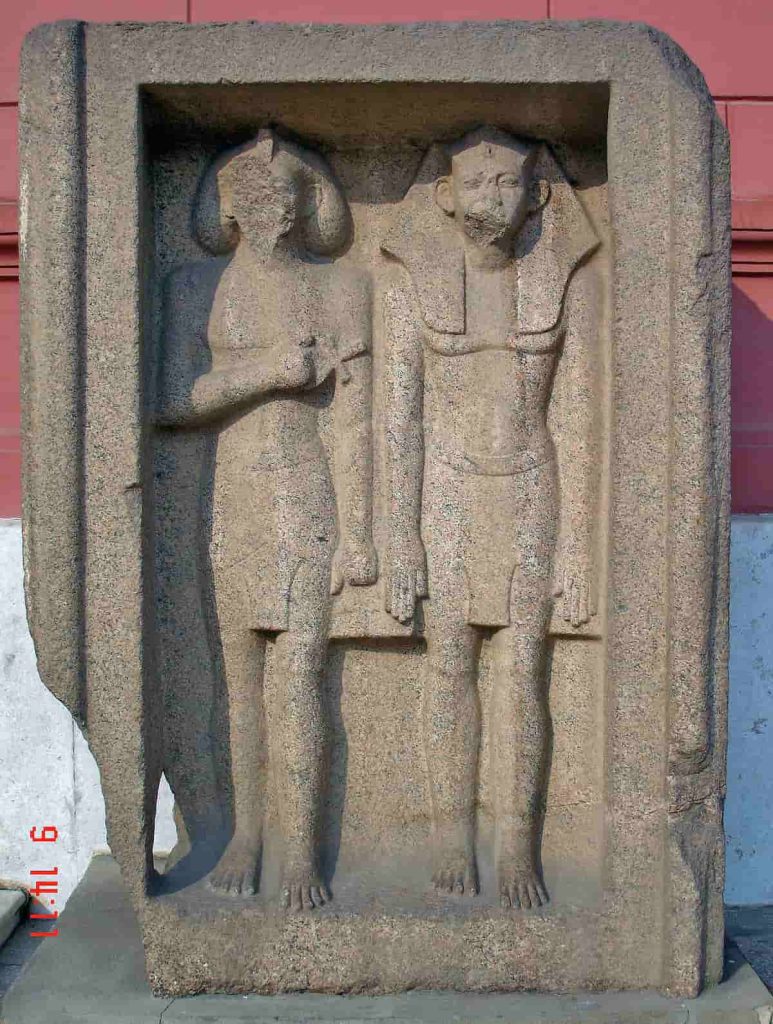
- In Faiyum, Amenemhat built a huge temple dedicated to Sobek at Kiman Faras. He dedicated a chapel to Renenutet at Medinet Madi.
- This small temple with three chapels is the best among his temple works. It existed toward the end of his reign, and his successor, Amenemhat IV, completed it.
- In Biahmu, he built a massive structure with two colossal 12 m (39 ft) tall seated quartzite statues of himself.
- These face Lake Moeris, for which he is credited with excavating, although how much of this work was conducted by Amenemhat III is unknown. Senusret II had inaugurated the work on Lake Moeris to link the Faiyum Depression with Bahr Yussef. This project reclaimed land downstream at the edges of Lake Moeris, allowing it to be farmed.
- A naturally formed valley 16 km (9.9 mi) long and 1.5 km (0.93 mi) wide was converted into a canal to link the depression with Bahr Yussef. The canal was cut to a depth of 5 m (16 ft) and given sloped banks at a ratio of 1:10 and an average inclination of 0.01° along its length. It is known as Mer-Wer or the Great Canal.
- The most enduring of his works are the two pyramids that he built for himself, the first king since Sneferu in the Fourth Dynasty to build more than one. His pyramids are in Dahshur and Hawara.
Amenemhat III Pyramids
Amenemhat III built many pyramids in many places:
1- The Black Pyramid In Dahshur

Black Pyramid and Bent Pyramid in Dahshur, Egypt
The construction of the pyramid at Dahshur, the ‘Black Pyramid’, began in the first year of Amenemhat III’s reign. The pyramid core was constructed entirely of mudbrick and stabilized through the building of a stepped core rather than with a stone framework. The structure was then encased by 5 m (16 ft; 9.5 cu) thick, fine white Tura limestone blocks held together by wooden dove-tail pegs. The pyramid length was 105 metres (344 ft; 200 cu). The top of the structure was crowned by a grey granite pyramidion 1.3 m (4.3 ft) high. This is now in the Egyptian Museum in Cairo. The pyramidion had a band of hieroglyphic text running on all four of its sides.
Furthermore, there was a mortuary temple of simple design in front of the pyramid. It consisted of an offering hall and an open columned courtyard. Surrounding the complex were two mudbrick enclosing walls. From the mortuary temple, an open, mudbrick-walled causeway led to the valley temple. The two queens, Aat and an unidentified queen, were buried here, and their remains were recovered from their chambers.
2-The pyramid of Amenemhat III at Hawara

Hawara Pyramid
Moreover, the second pyramid is at Hawara in the Faiyum Oasis. This pyramid project began around Amenemhat III’s 15th regnal year, after problems with the Dahshur pyramid persisted. The pyramid had a core constructed totally of mudbrick encased in fine white Tura limestone. The pyramid length was between 102 m (335 ft; 195 cu) and 105 m (344 ft; 200 cu).
There was a shallower inclination angle as a step taken to guard against the threat of a collapse and avoid a repeat of the failure at Dahshur. Inside the substructure, builders took further precautions, such as lining chamber pits with limestone.
3-The pyramid of Neferuptah
The pyramid of Neferuptah was 2 km (1.2 mi) south-east of Amenemhat III’s Hawara pyramid. Nagib Farag and Zaky Iskander excavated it in 1956. The superstructure of the pyramid is nearly completely unexisted, and the substructure was found full of groundwater, but her burial was otherwise undisturbed, including both her sarcophagus and funerary equipment.
Sculpture in Amenemhat III Regin
Amenemhat III and Sensuret III are the best attested rulers of the Middle Kingdom by the number of statues. As they had about 80 statues that could be assigned to the former. The sculpture of Amenemhat III continued the tradition of Senusret III. A wide range of stones was used for the sculpture of the king, including white limestone, obsidian, chalcedony, and copper alloy.
Furthermore, the king introduced new types of sculptures, many of which were inspired by far older works. For example: A sculpture of the expressive type in the Ny Carlsberg Glyptotek, Copenhagen, and A sculpture of the humanized type in the Staatliches Museum Ägyptischer Kunst, Munich, a Half-lifesized head in mottled, a Granite statue in the Egyptian Collection of the Hermitage Museum, St. Petersburg, and The Statue of Amenemhat III.
The Statue of Amenemhat III
Joseph Hekekyan found the Statue of Amenemhat III in the Egyptian Museum in Berlin in 1854 at Memphis in Egypt. The Egyptian Museum bought it in 1855. The statue is one of the highlights of the Egyptian Museum in Berlin and one of the most important sculptures of Ancient Egypt in general.
The statue was of granodiorite and is 200 cm high. It shows the Middle Kingdom Egyptian king Amenemhat III in a position of prayer. The throne name of the king still existed on the belt. In the Egyptian 19th Dynasty, King Merenptah reinscribed the statue. His names and titles are on the back pillar.
Officials During Amenemhat III Regin
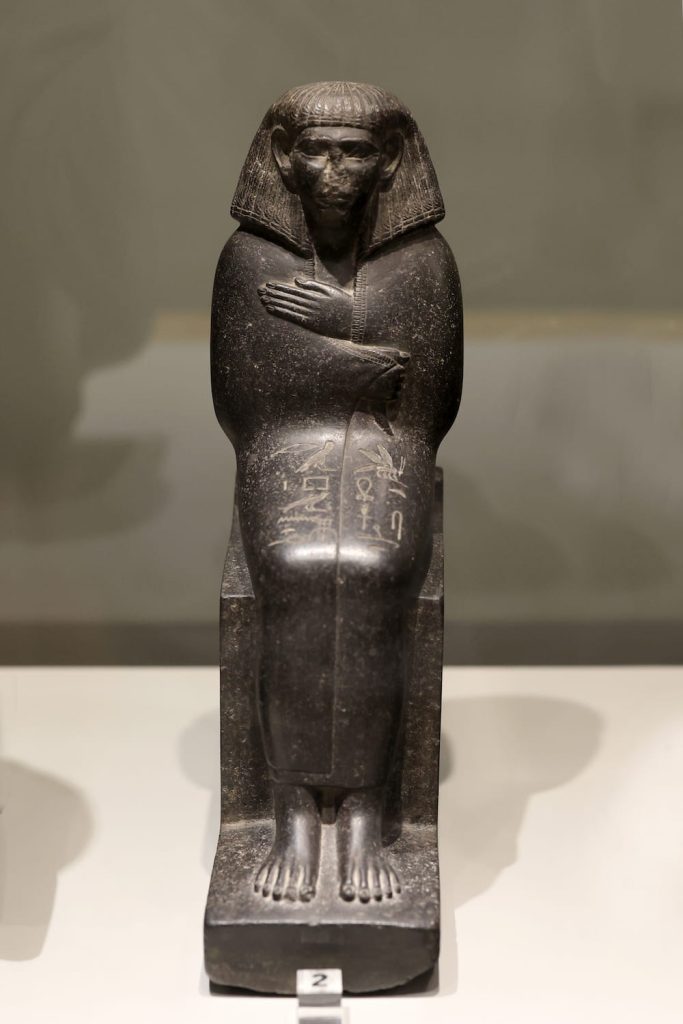
Statuetta di Khenti-Kheti, Medio Regno
1- The vizier Kheti (H̱ty) held office around year 29 of Amenemhat III’s reign. Moreover, it existed on a papyrus from el-Lahun.
2- A further vizier datable to the reign was Ameny (Ỉmny). They found that Ameny is on two rock inscriptions from Aswan.
3- Khnumhotep (H̱nmw-ḥtp) was an official who held office for at least three decades from Senusret II’s first regnal year through to Amenemhat III’s reign.
4- The treasurer Ikhernofret (Y-ẖr-nfrt) was still in office in the early years of the king’s reign, as is demonstrated by a funerary stela in the Egyptian Museum in Cairo.
5- Another chief steward, Senbef (Snb=f), is known from an expedition stela at Mersa and from a papyrus document. There were many other officials during his reign.
Conclusion
Overall, King of the Twelfth Dynasty. He reigned for about 45 years and is famous as the builder of the mortuary complex of the king at Hawara, at the entrance to the Fayum. There are several other buildings of the king in the Fayum (temple at Medinet Maadi, colossi at Biahmu) that demonstrate the general interest of the king in that region of Egypt. His first pyramid was in Dahshur, but because of problems with the ground, he built another pyramid (Hawara), towards the end of his reign. Especially in the Ptolemaic and Roman Periods, the king was in the Fayum as a god. The sculpture of the king is remarkable for several unique statue types.
The pyramidion of Amenemhat III is a masterpiece of ancient Egyptian culture that embodies the intersection of religion, art, and engineering. The Black Pyramid is the crowning element that the Egyptians discovered in 1900. The artifact expressed the divine kingship, cosmic balance, and cultural innovation. Its inscriptions and design provide invaluable insights into the Middle Kingdom’s theological and architectural achievements, while its preservation allows for ongoing exploration of ancient Egypt’s enduring legacy.

